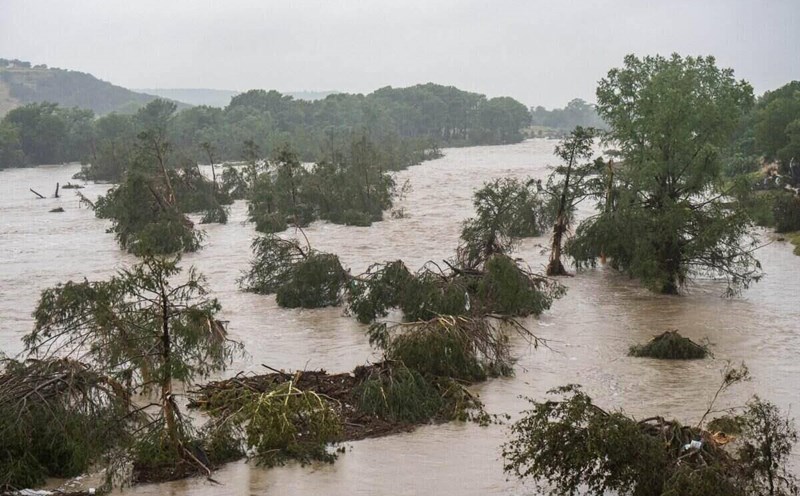The National Weather Service said flooding has been reported near Newark, New Jersey, New York City, northern Virginia and southern Maryland, and more warnings are likely on July 15.
Governor Phil Murphy has declared a state of emergency in New Jersey due to flooding since the evening of July 14, warning residents to " avoid going out unless absolutely necessary".
The US weather agency forecasts continued rainfall on July 15 after heavy rains swept across the eastern part of the country, including New York City. On the night of July 14, more than 50mm of rain fell on New York City between 7pm and 8pm local time.
This is the second- heaviest rainfall ever recorded in New York, after a record 89mm recorded in Hurricane Ida in 2021. Record-breaking hourly rainfall in New York City typically happens once every decade.
Social media videos show floodwaters flooding New York metro stations and carriages as passengers crumble on their seats.
A spokesperson for the Urban Transport Agency said that at least 1 metro station was flooded. Some trains have also been suspended, delayed or diverted due to flooding.
According to the US Federal Aviation Administration, a number of airports in the New York City area have issued flight stops and postponements as of the evening of July 14. The impacts of extreme weather on aviation operations have also been noted at Ronald Reagan Washington International Airport and Boston Logistics International Airport.
Many videos on social media show that in New Jersey and Pennsylvania, cars have difficulty moving on flooded streets.
As of the morning of July 15, more than 200,000 people were still in the flash flood warning area. Millions of others, including those in the Washington, D.C., Baltimore and Philadelphia metro areas, are flood watched.
Most areas within the flood warning area have recorded up to 300% of normal rainfall in the past 2 weeks.
Recent rainfall, especially in parts of central New York and Pennsylvania over the weekend, has saturated the soil, increasing the risk of severe flooding.
Record-breaking flooding has occurred almost continuously in recent weeks, most notably in Hill County, Texas, with more than 130 people dying in the catastrophic flood on July 4. New Mexico, North Carolina and other east coastal states also recorded flooding and record-breaking rainfall this month.











